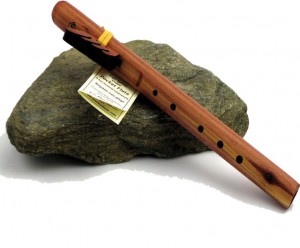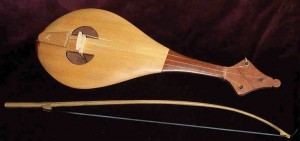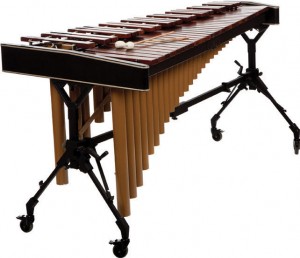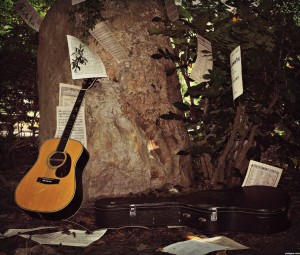The Magical Wonder of Trees
If you’ve ever made a little bed at the base of an old and gnarly tree, and laid there daydreaming or napping under its comforting and ageless embrace, then you’ve had a glimpse of the profound importance of the humble tree. Trees are sanctuaries, and when we know how to listen to them and speak to them we can learn mighty truths. They give us shade, and shelter, and beauty, and food and medicinal things. They provide homes to birds and insects and other critters. Little kids love to climb them, poets write about them, and they give insight into the geologic and climatic history of the land. They are cranky old Mother Nature’s finest contribution to the planet, and so of course we cut them down to make paper and furniture and dyes and boats and cellos and drumsticks, or we burn them to keep warm or to play music by a bonfire on the beach, or just to indulge in our fascination with fire.
I love the smell of pine trees in the Rocky Mountains and the sweet smell of a magnolia tree on the avenues of New Orleans, or the weird cookie smell of cedar shakes on a barn roof in the rain. I really love the incredible scent of the ylang-ylang tree in my yard here – geesh, that’s what they make Chanel #5 out of! There’s a cinnamon tree steps away from my porch that I can scrape the bark with my fingernail, close my eyes and be transported to a land of Arabian tents and beautiful horses galloping under a full moon . . . well, maybe that’s just me and too many Disney movies, but it does smell great. Even if you’re not a passionate tree-hugger, hopefully you’ve had the pleasure of listening to someone create beautiful music with an instrument made from wood.
 Every instrument has its own particular voice depending on the wood used, its cellular make-up, the cut from the tree, drying time, sap content, and the technique and skill of the luthier. One of the coolest things to witness is how the sound of an instrument will change the more it is played – usually becoming richer and sweeter. Sound is all about vibrations, and the vibrations alter the molecular structure in the wood and in the varnish, which alters the sound. Kinda nice to know there’s a subtle benefit from practicing besides just getting better! I once attended a way too brainy lecture by a physicist who was analyzing how the great old Italian violins react to sound waves and other technical stuff. He had an instrument constructed exactly to the same dimensions and widths and details of a Stradivarius, and it sounded good, but not great. He basically came to the conclusion – one us lowly fiddle players already knew – that the wood cannot be duplicated, and that though the varnish is one of the keys, the recipe for it is essentially unknown today.
Every instrument has its own particular voice depending on the wood used, its cellular make-up, the cut from the tree, drying time, sap content, and the technique and skill of the luthier. One of the coolest things to witness is how the sound of an instrument will change the more it is played – usually becoming richer and sweeter. Sound is all about vibrations, and the vibrations alter the molecular structure in the wood and in the varnish, which alters the sound. Kinda nice to know there’s a subtle benefit from practicing besides just getting better! I once attended a way too brainy lecture by a physicist who was analyzing how the great old Italian violins react to sound waves and other technical stuff. He had an instrument constructed exactly to the same dimensions and widths and details of a Stradivarius, and it sounded good, but not great. He basically came to the conclusion – one us lowly fiddle players already knew – that the wood cannot be duplicated, and that though the varnish is one of the keys, the recipe for it is essentially unknown today.
The origin of stringed instruments is lost in the mists of time, but there was a 3 stringed instrument called a rebec that was played with a bow and is considered by music historians to be the predecessor of the violin. Its roots are ancient, and it probably came from the Orient, though Islamic people of the 10th century played them. The Moorish people of Spain would celebrate their battlefield victories with people playing these instruments, and they popped up again in 13th century France, where rebec players, joined by a guy on a tambourine, played at royal weddings and functions. The rebec, which supposedly had a hard, nasal tone, was morphing into the vielle, then the viola de gamba, eventually becoming the more refined violin we use today. In 1628 the lawmakers of Paris forbade all violins from being played in taverns or places of ill-repute, leaving only the lowly rebec to entertain the masses. Guess I would have been a rebec player back then, as I’m more inclined to hang out in dives than at grand royal banquets.
 It’s clear that the violin of today is the fruit of a thousand changes and experiments in wood and form and construction, but none made today equal in nobility of tone the instruments made by the Italian luthiers of the 1600’s. It was a freak of nature that combined the right temperature and rainfall and soil and whatever to produce just the perfect wood. Varnish was made in open vats of who knows what – I read about violin makers arguing over the correct amount of mares sweat to be included. The first choice nowadays for the top of a violin is usually spruce – it’s light in weight yet strong and flexible. Most often the back, sides and neck are made from maple, sometimes poplar. Ebony, spruce or willow is used for other inside parts, and much of the wood used needs to be stored in controlled conditions for maybe 10 years or more.
It’s clear that the violin of today is the fruit of a thousand changes and experiments in wood and form and construction, but none made today equal in nobility of tone the instruments made by the Italian luthiers of the 1600’s. It was a freak of nature that combined the right temperature and rainfall and soil and whatever to produce just the perfect wood. Varnish was made in open vats of who knows what – I read about violin makers arguing over the correct amount of mares sweat to be included. The first choice nowadays for the top of a violin is usually spruce – it’s light in weight yet strong and flexible. Most often the back, sides and neck are made from maple, sometimes poplar. Ebony, spruce or willow is used for other inside parts, and much of the wood used needs to be stored in controlled conditions for maybe 10 years or more.
Bow making is a whole other skill and process, and the best wood for bows is a wood from Brazil called pernumbuco. It usually has a straight grain, and can be split into the right shape and weight in a natural way once it is carefully examined by an experienced craftsman. This wood is just about wiped out (it was exported for making dyes, as well as bows) and is on the endangered species list. Most respected bow makers today have joined together worldwide to limit the cutting of these trees and encourage smart re-planting, as it only survives in secondary forests and is tricky to cultivate. It’s amazing how every bow will produce a different sound on the same violin or viola or cello. Modern carbon fiber bows are a good alternative to using a pernumbuco bow – maybe not as aesthetically pleasing but definitely better for the survival of the species.
 rummers have traditionally used maple, hickory or oak to make their drumsticks, which should be the perfect combo of balance, response and ‘feel’. Maple produces drumsticks for light, fast playing with the greatest amount of flex, and hickory is more rigid and durable and has a more pronounced sound. Many factors go into their design – their shape, thickness, length, the shape of the tip and of course the type of wood.
rummers have traditionally used maple, hickory or oak to make their drumsticks, which should be the perfect combo of balance, response and ‘feel’. Maple produces drumsticks for light, fast playing with the greatest amount of flex, and hickory is more rigid and durable and has a more pronounced sound. Many factors go into their design – their shape, thickness, length, the shape of the tip and of course the type of wood.
Guitar makers have traditionally preferred to use rosewood, especially Brazilian rosewood, and it has become scarce and expensive due to trade restrictions put in place a little bit late. Spruce is another popular wood for guitars, with Sitka spruce (Alaskan) being the favorite and Adirondack (or red) spruce being ideal for guitars played in a heavy bluegrass flat-picking style. It is becoming more difficult to find the appropriate spruce wood in large pieces.
Cedar is often used in the tops of classical style guitars, as it produces a warmer sound and works well with nylon strings. Mahogany is used in making lutes and mandolins – as well as solid body electric guitars, such as the Gibson Les Paul that rockers just love. Years ago I took New Orleans blues guitarist John Mooney a big ‘ole slab of Purple Heart wood from here (locally known as nascerano) and he made a great sounding – if a bit heavy – electric guitar out of it. Unfortunately mahogany was over-logged and is now commercially extinct from its native locations, although plantation grown mahogany is available from a few Asia/Pacific countries and there are other less endangered and less expensive African woods being experimented with. Many guitar makers are turning to re-claimed wood – using old salmon traps from Alaska, various old construction woods from the U.S. northwest, from trees that have blown down or from specially permitted removals in conservation areas.
Indigenous peoples and folks in rural areas have always found ways to make instruments from the trees around them, often using seeds or gourds or some other by-product of the tree to invent percussion instruments or flutes or rustic keyboards. The marimba players in Nicaragua make this totally cool, portable marimba out of bamboo. They shape it in such a way that when they sit on the back part of this contraption, the row of different sized bars of wood is in their lap where they can hit them with the wooden mallets – a rustic and ingenious xylophone with a great organic sound. Our local bamboo also can be easily hollowed out into a didgeridoo, and wood blocks and wooden sticks (claves) are essential to Latin rhythms and its particular sound. A guiro is an open-ended hollow gourd with parallel notches on one side that you scrape with a wooden stick for that classic Latin beat and feel. It plays a key role in the typical rhythm section of cumbia and son music – kinda like the old metal washboard that bluegrass players used. Even simple castanets have their place in Latin rhythms – carve two concave shells out of a hardwood, join them with a cord and snap them together for a great percussive sound.
Rainforests are disappearing at an alarming rate; the earth’s climate is changing, and we may lose some of our coolest instruments and woodworking skills through miss-management of our natural resources. The Chinese have a saying – The best time to plant a tree is 20 years ago. The next best time is now.
Come on out and support live music wherever it is available – you will hear the love of fine wooden instruments in the sound. Ben Orton and I and the other members of the HOWLERS play most every Friday night at the beautiful and spacious Roca Verde in Dominical, and check out the venues around here to find out about other musicians and live music gigs. Plant a tree for the future of us all!
“What we are doing to the forests of the world is but a mirror reflection of what we are doing to ourselves and to one another.” Mahatma Gandhi
“Suburbia is where the developer bulldozes out the trees, then names the streets after them.” -Bill Vaughan
“Storms make trees take deeper roots.” -Dolly Parton
“God has cared for these trees, saved them from drought, disease, avalanches and a thousand tempests and floods. But he cannot save them from fools.” -John Muir
Lifelong professional musician Nancy Buchan and her husband Charley built a house in Dominical 20 years ago, and moved there full time after Hurricane Katrina swept them out of their beloved New Orleans. Nancy plays her 5 string violin in a variety of situations – from rock and roll with Ben Jammin’ and the Howlers to jazz with C.R. pianist Manuel Obregon to Bach at beach weddings. She has been featured on over 50 cds and teaches violin at the Escuela de Musica Sinfonica in San Isidro. Contact her at [email protected].

